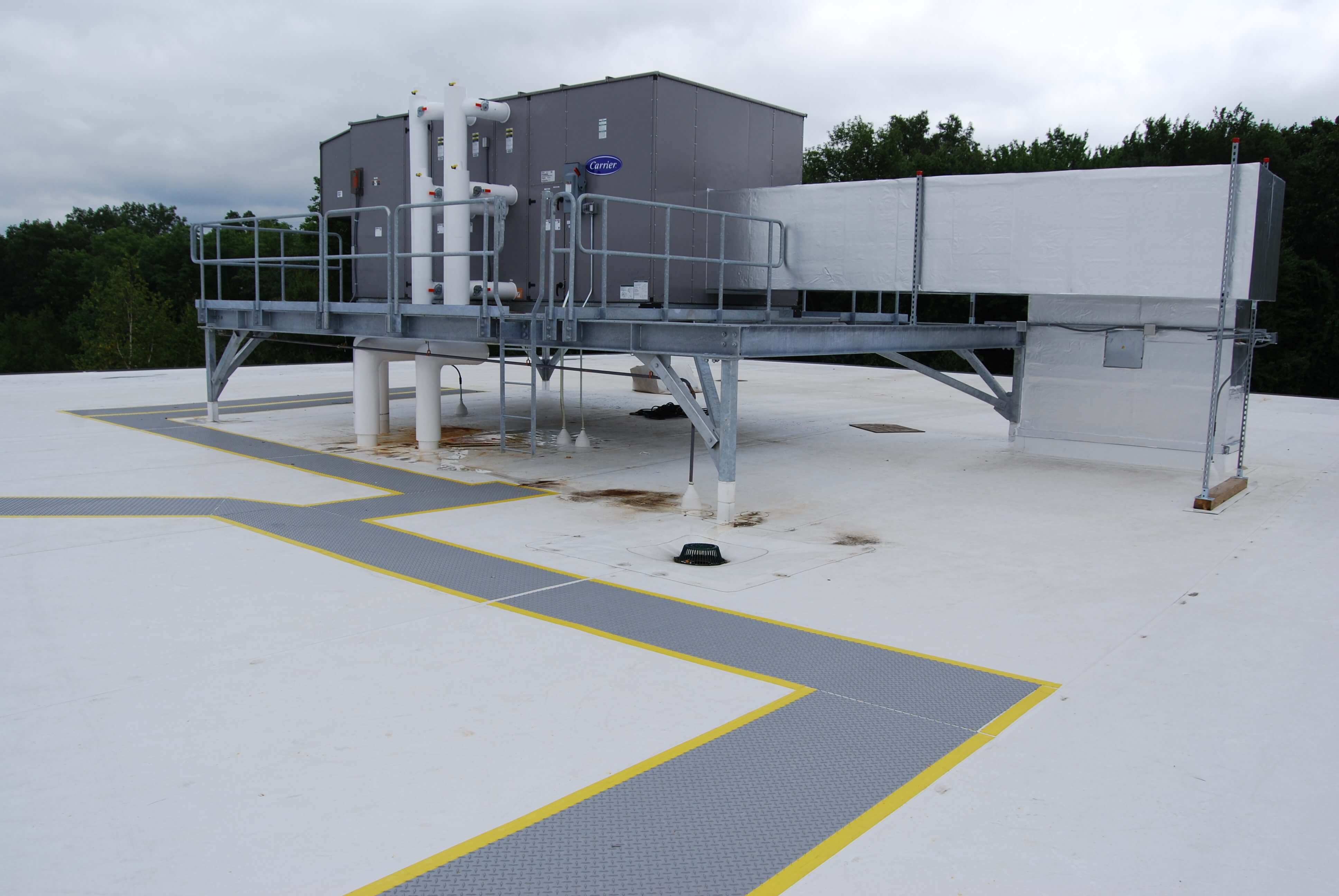Flat rubber roofing is the perfect solution to commercial, flat roof problems.
It is durable, easy to maintain and will last for many, many years. At Chaffee Roofing we always have clients asking us to recommend a flat or rubber roofing product for their commercial roofs. Thermoplastic Polyolefin (TPO) is almost always discussed. We put together this post to show why TPO stands out among rubber roofing varieties.

Top reasons TPO stands out as a rubber roofing solution are:
- Low-cost, yet high quality
- White color reflects the sunlight
- It has heat-welded seams and flashings, the strongest technology in the industry
- Resists the growth of mildew and corrosion
Let’s take a closer look at each point.
Low-cost, yet high quality
A big appeal for any roofing project is the cost of the raw material.
TPO is the least expensive flat or rubber roofing material on the market, sometimes by a decent amount depending on what other products are being proposed. When you are doing a commercial installation, involving a large roofing area, the lower cost can be very attractive, especially since you are typically receiving the same warranty as competing products.
Low cost does not mean low quality. TPO is a top-quality roofing material that has been around for over 40 years.
White color reflects the sunlight
A big problem for many companies is that a black roof will absorb the heat of the sun. This can lead to higher utility bills during the warmer months, due to continuous running of the air conditioning. TPO is typically white. The color reflects the glare of the sun and will not absorb the excess heat.
TPO will help keep your utility bills under control. It will also help your rooftop units operate under cooler conditions.
TPO has heat welded seams
A majority of leaks in a flat, rubber roof system come from flashings, seams, and other detail work. One of the biggest reasons is that, with most other products, the seams and flashings are the first to break apart over time. Adhesives, primers and asphalt cement products all have a limited life and will eventually break down. As a result, many older roofs need to have the seams and flashings stripped in toward the end of the roofs life. Or, these areas need to be patched.
TPO membrane is heat welded, which is the strongest bond in the roofing industry. Once a seam or flashing detail is heat welded, the sheet becomes completely bonded together. If welded properly, a heat weld will never fail. Even after 30+ years of performance, TPO welds remain solid. In fact, in many cases, they are the strongest part of the roof system.
Resists growth of mildew and corrosion
Roofs are vulnerable to all kinds of weather.
A problem is the growth of mildew and fungi in areas which do not get a lot of sunshine, but plenty of damp weather. North facing roofs, in particular, suffer from this problem.
TPO resists growth on the surface. It does not need pressure washing, which some other materials may need. TPO also resists corrosion due to spills from food outlets much better than other roof systems and it is acid resistant too. Grease guards still need to be utilized, but if they overfill, TPO will be much more resistant.
TPO is also durable and requires little maintenance.
Call Chaffee Roofing
Your roofing project is only as good as the installing company and the product they use. On TPO roof systems, this is especially important since effective welding requires skilled workers.
At Chaffee Roofing we use TPO of the highest quality and our technicians are highly trained. We offer the best service and guarantee all of our work.
Call Chaffee Roofing today for answers to all of your TPO roofing questions.